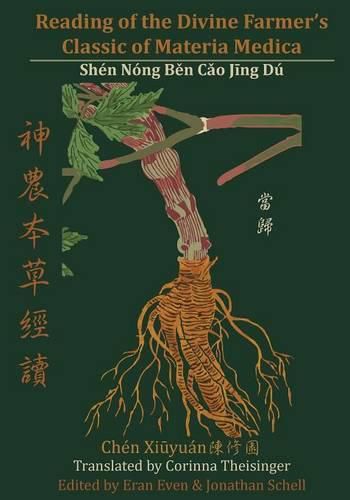Readings Newsletter
Become a Readings Member to make your shopping experience even easier.
Sign in or sign up for free!
You’re not far away from qualifying for FREE standard shipping within Australia
You’ve qualified for FREE standard shipping within Australia
The cart is loading…






This title is printed to order. This book may have been self-published. If so, we cannot guarantee the quality of the content. In the main most books will have gone through the editing process however some may not. We therefore suggest that you be aware of this before ordering this book. If in doubt check either the author or publisher’s details as we are unable to accept any returns unless they are faulty. Please contact us if you have any questions.
The original text of the Shen Nong Ben Cao Jing
(Divine Farmer’s Classic of Materia Medica) was compiled in the first or second century A.D. and consists of three parts. The first part discusses high-grade medicines that can prevent illnesses and lead to longevity, the second part contains medicines to cure patients, and the third one deals with toxic medicines of the lowest grade, which cure diseases, but have side effects. There are 365 herbs described in the Shen Nong Ben Cao Jing, and in the following translation, there are 116 medicinals which have been excerpted from the original, and 46 from later appendices. The Reading of the Divine Farmer’s Classic of Materia Medica includes commentaries by Chen Xiuyuan
, Zhang Yin'an
and the scholar-physician Xu Lingtai
, whose commentary on the Divine Farmer’s Classic of Materia Medica was first published in 1736.
The ancient part of the Shen Nong Ben Cao Jing gives the yin and yang qualities, the qi and flavor of each medicine, and also lists the indications. That is all. In his commentary Chen Xiuyuan explains the attributes of each herb quality according to the five elements and gives plenty of information on the Chinese understanding of physiology and pathophysiology. He tries to make clear why this or that indication is listed for a certain medicine and sometimes even includes the doctrine of signatures.
$9.00 standard shipping within Australia
FREE standard shipping within Australia for orders over $100.00
Express & International shipping calculated at checkout
This title is printed to order. This book may have been self-published. If so, we cannot guarantee the quality of the content. In the main most books will have gone through the editing process however some may not. We therefore suggest that you be aware of this before ordering this book. If in doubt check either the author or publisher’s details as we are unable to accept any returns unless they are faulty. Please contact us if you have any questions.
The original text of the Shen Nong Ben Cao Jing
(Divine Farmer’s Classic of Materia Medica) was compiled in the first or second century A.D. and consists of three parts. The first part discusses high-grade medicines that can prevent illnesses and lead to longevity, the second part contains medicines to cure patients, and the third one deals with toxic medicines of the lowest grade, which cure diseases, but have side effects. There are 365 herbs described in the Shen Nong Ben Cao Jing, and in the following translation, there are 116 medicinals which have been excerpted from the original, and 46 from later appendices. The Reading of the Divine Farmer’s Classic of Materia Medica includes commentaries by Chen Xiuyuan
, Zhang Yin'an
and the scholar-physician Xu Lingtai
, whose commentary on the Divine Farmer’s Classic of Materia Medica was first published in 1736.
The ancient part of the Shen Nong Ben Cao Jing gives the yin and yang qualities, the qi and flavor of each medicine, and also lists the indications. That is all. In his commentary Chen Xiuyuan explains the attributes of each herb quality according to the five elements and gives plenty of information on the Chinese understanding of physiology and pathophysiology. He tries to make clear why this or that indication is listed for a certain medicine and sometimes even includes the doctrine of signatures.